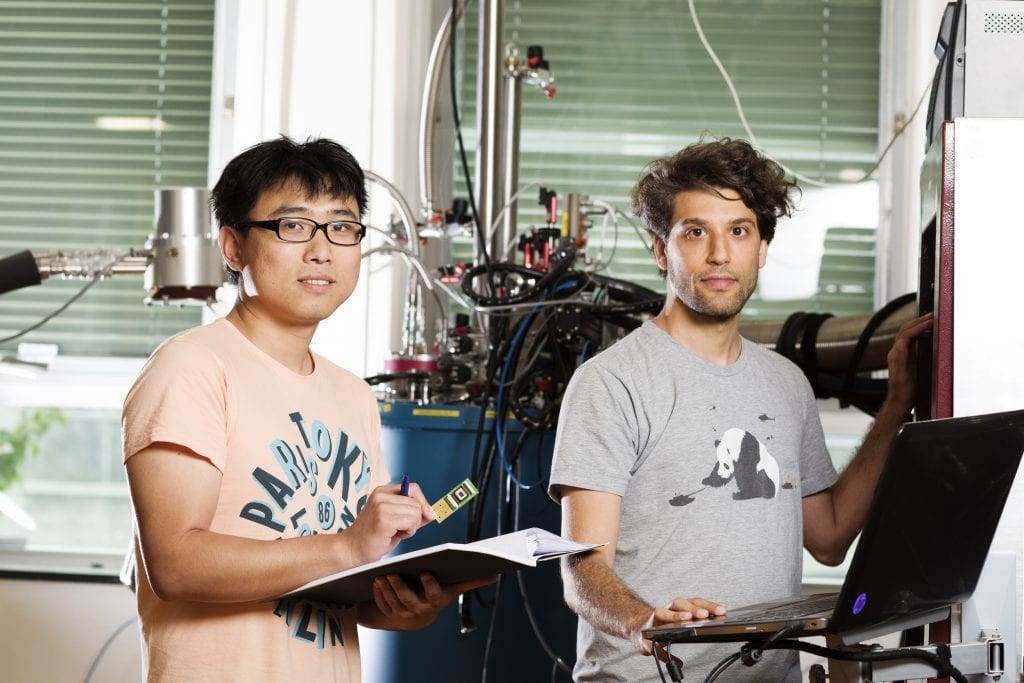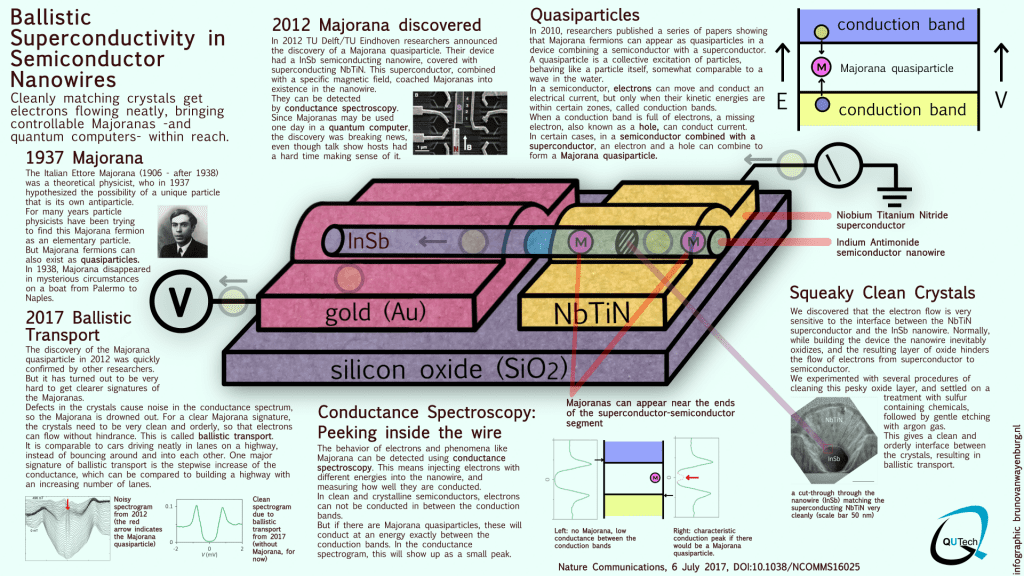06.07.2017Quantum Computing
Majorana-highway on a chip

The first experimental evidence of a Majorana fermion in Delft 2012 led to a wave of scientific enthusiasm: control of such particles is a holy grail in quantum science and technology. Quantum chips based on Majorana fermions promise error-protected quantum computations. However, the fabrication of Majorana devices is an extremely challenging task.
A collaboration of researchers has now combined state-of-the art nanowires with a high-quality interface to other required materials on a chip. This allows for bullet-like collisionless quantum transport of charges through the nanowires: a requirement for larger-scale Majorana experiments.
The novel methods open doors towards quantum computations based on Majorana fermions, allow for the exploration of new quantum effects in such materials and can have future applications in energy-efficient electronics.
See the infographic made by Bruno van Wayenburg for all interesting details of this novel quantum chip and its future applications.

Hao Zhang1,2†*, Önder Gül1,2†*, Sonia Conesa-Boj1,2,3, Michal P. Nowak1,2,4, Michael Wimmer1,2, Kun Zuo1, 2, Vincent Mourik1,2, Folkert K. de Vries1, 2 , Jasper van Veen1, 2, Michiel W.A. de Moor1, 2, Jouri D.S. Bommer1,2, David J. van Woerkom1,2, Diana Car3, Sébastien R. Plissard2,3, Erik P.A.M. Bakkers1,2,3, Marina Quintero-Pérez1,5, Maja C. Cassidy1,2, Sebastian Koelling3, Srijit Goswami1,2, Kenji Watanabe6, Takashi Taniguchi6, Leo P. Kouwenhoven1,2,7*
1 QuTech, Delft University of Technology, 2600 GA Delft, The Netherlands
2 Kavli Institute of Nanoscience, Delft University of Technology, 2600 GA Delft, The Netherlands
3 Department of Applied Physics, Eindhoven University of Technology, 5600 MB Eindhoven, The Netherlands
4 AGH University of Science and Technology, Faculty of Physics and Applied Computer Science, al. A. Mickiewicza 30, 30-059 Kraków, Poland
5 Netherlands Organisation for Applied Scientific Research (TNO), 2600 AD Delft, The Netherlands
6 Advanced Materials Laboratory, National Institute for Materials Science, 1-1 Namiki, Tsukuba, 305-0044, Japan
7 Microsoft Station Q Delft, 2600 GA Delft, The Netherlands
†These authors contributed equally to this work.
* Correspondence to H.Zhang-3@tudelft.nl, Gul.Onder@gmail.com or L.P.Kouwenhoven@tudelft.nl
Press contact:
Dr. ir. Julia Cramer
j.cramer@tudelft.nl
T: +31 (0) 6 249 286 65
